I’ve always had a keen interest in ancient culture, especially when it’s really really old. Whether it’s prehistoric, Egyptian, Persian, Greek, Etruscan or Roman (or anything inbetween), it has an extraordinary appeal to me. I really like old temple complexes, multicolored frescoes, sculpted pillars and weathered statues. Is it the mystery, the uniqueness, or just that it takes us back to a time where things were less complicated and much more authentical? Since my visit to the Pergamon Museum in Berlin in 2014, I have especially freshened my interest in Persian/Assyrian/Babylonian culture. I feel sad that I haven’t visited any Persian ruins before, and seeing lots of this heritage destroyed by iconoclastic fanatics in Syria and Iraq really hurts…
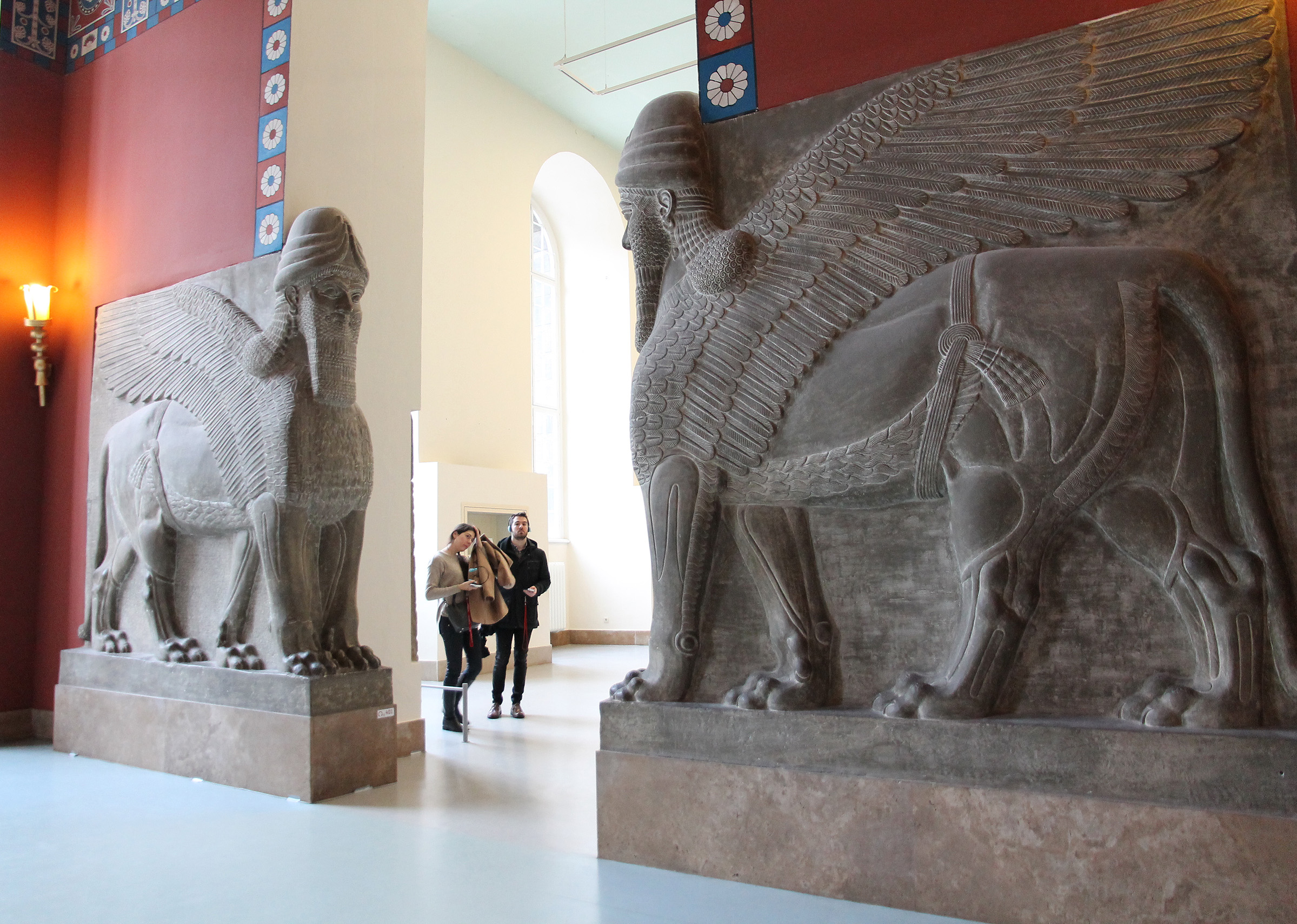
I’ve also had a soft spot for the Greeks and Romans since taking Latin classes in secondary school. Again, we haven’t been to many Greek/Roman sites during our travels. We’ve seen a bit of history of the Roman Empire in Italy (Rome, Pompei), France (Orange, Arles) and Germany (Trier), and saw many excellent Etruscan graves in Tarquinia. Annick also went to the large amphitheatre of Verona (Italy) and the impressive complex in Caesarea (Israël). Paestum (Italy), Ephesus (Turkey) and Knossos (Crete) are the only Greek ruins we’ve visited.
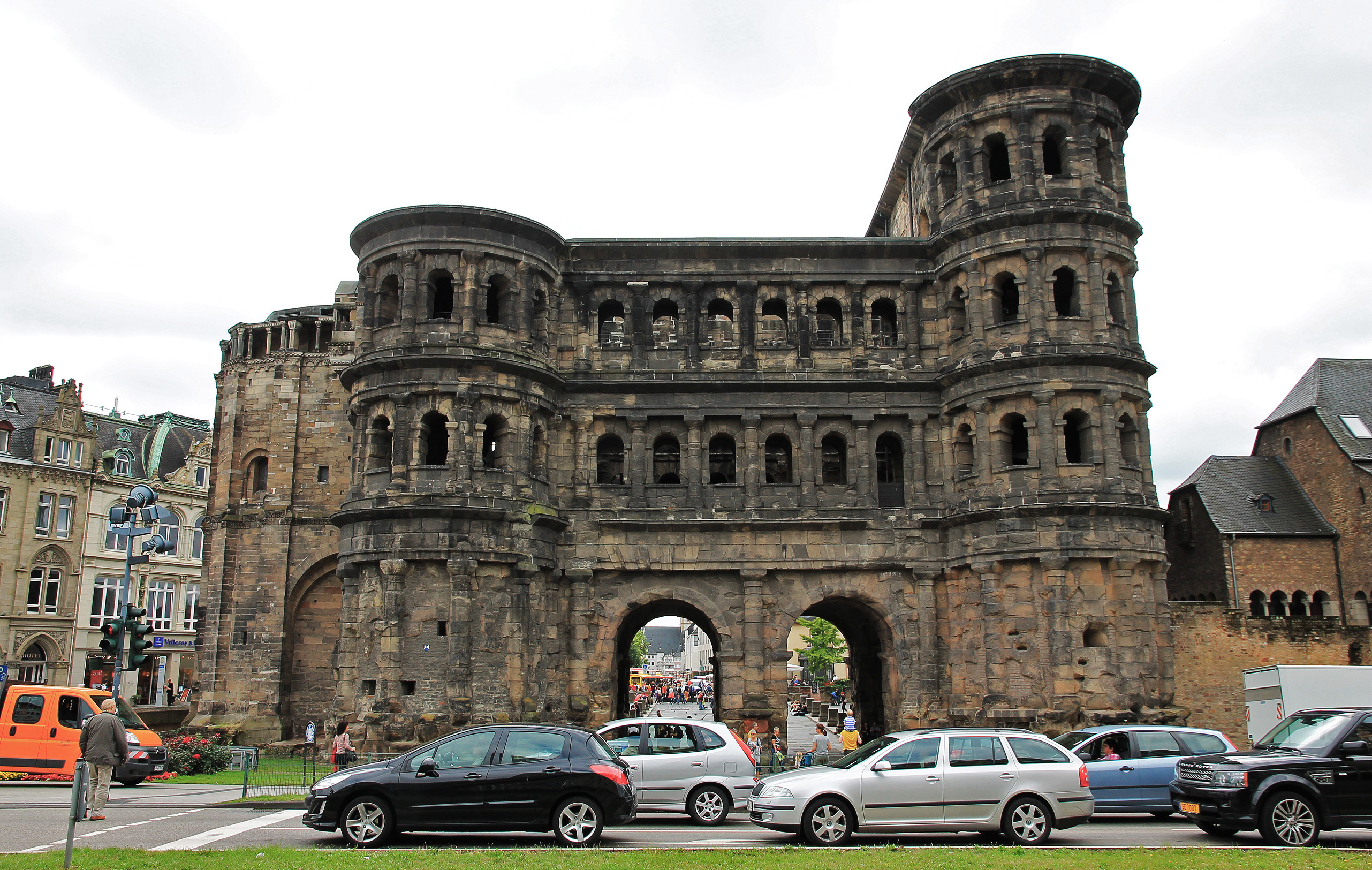
Recently, we’ve updated our bucket list with “A citytrip to ancient cities”: Jerash (Jordan), Ephesus (Turkey), Persepolis (Iran), Petra (Jordan), Baʿalbek (Lebanon), Angkor (Cambodja), Teotihuacan (Mexico), Machu Pichu (Peru), Carthage (Tunisia), Leptis Magna (Libya), Palmyra (Syria). This reflects our intention to focus more on ancient ruins in the future, wherever and whenever it is possible. Although there are many bits and pieces of Roman history left around the world, it’s seldom that you find large-scale structures that are still substantially intact.
The most elaborate ancient Roman structures we’ve come across until now must have been the Colosseum and the Forum Romanum in Rome. From the 230 or so remaining Roman amphitheatres in the world, the 6th largest is located in Croatia. The Pula Arena is also the best preserved ancient monument in Croatia. A small amphitheatre was built here under Emperor Claudius, but his successor Vespasianus had it enlarged in the first century AD, until it became a giant that could seat no less than 20000 people. They even had sea battles in there! In the Middle Ages it was the site of knights, tournaments and fairs. Today it is a lot smaller than it used to be (there is room for only 5000 people), because a lot of its stones were used for the construction of other buildings in the city in the 15th century.

We visited Pula in August of 2015. Arriving in Croatia pretty much unprepared, we just went to see the amphitheatre. We soon realised, however, that Pula has much more Roman history on offer.
But first, the amphitheatre. It was the first time that I stood in the middle of such an arena, and it was a superb feeling: impressive, thrilling, historical in a sense. From the stand, you can see the Mediterranean sea behind the three-story wall on the one side and the Church of St Antony on the other.
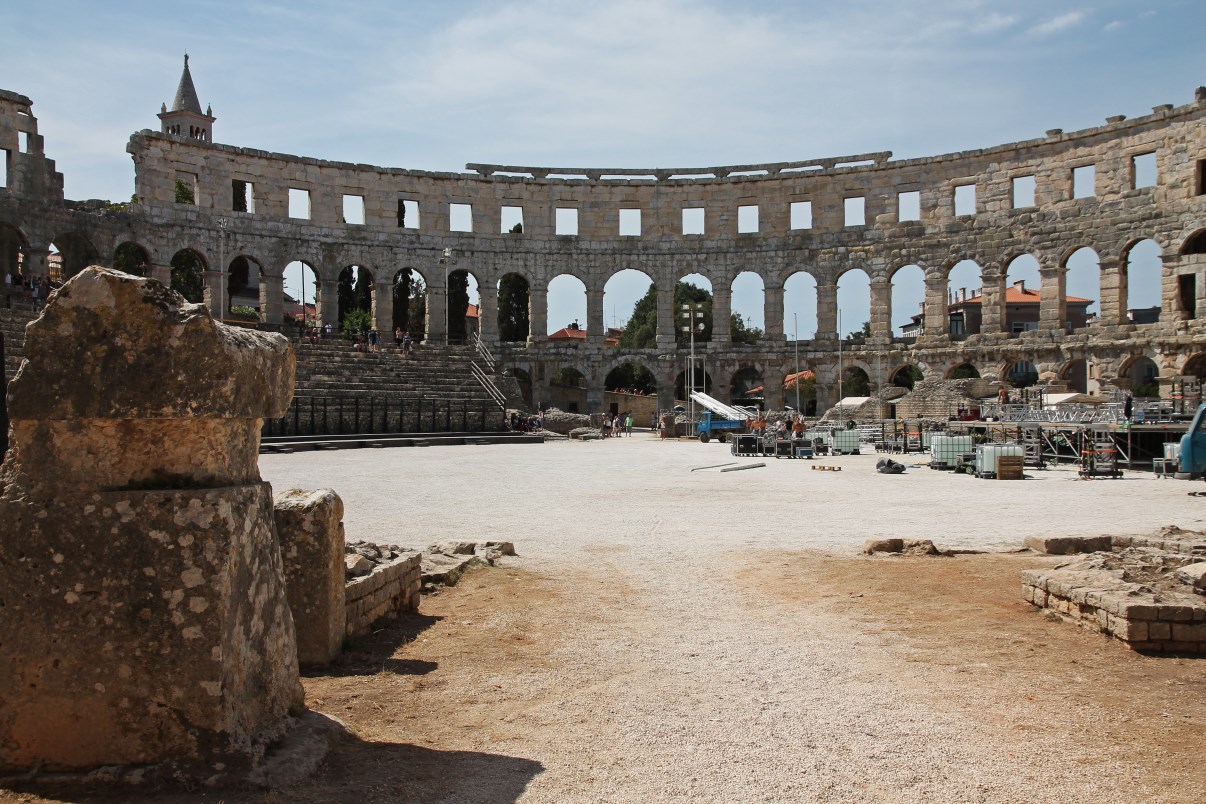
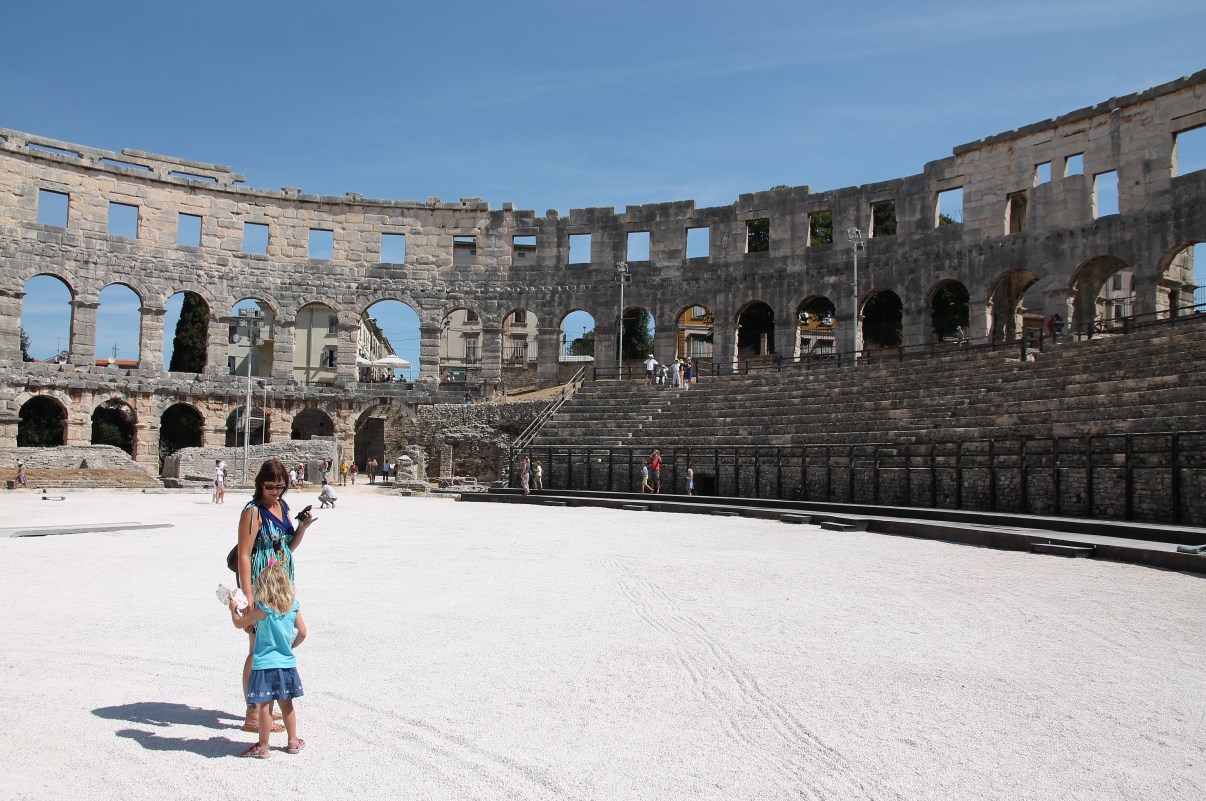

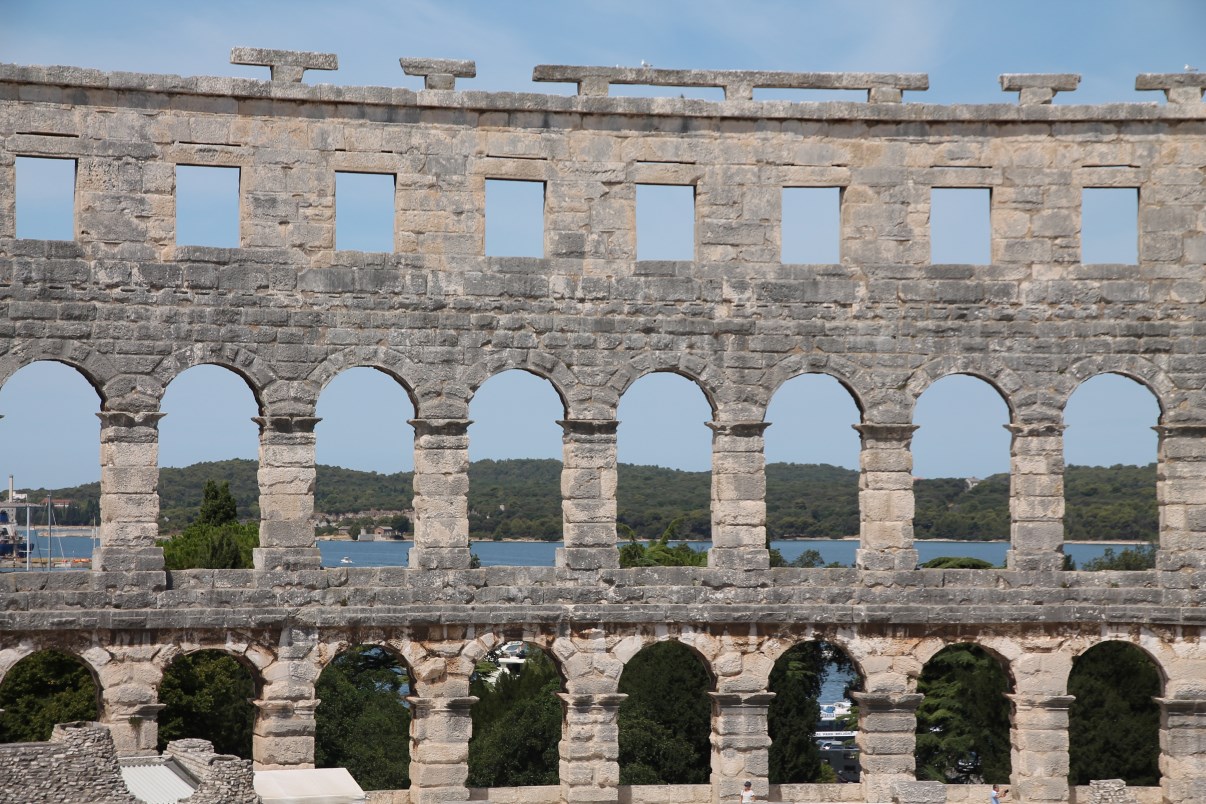
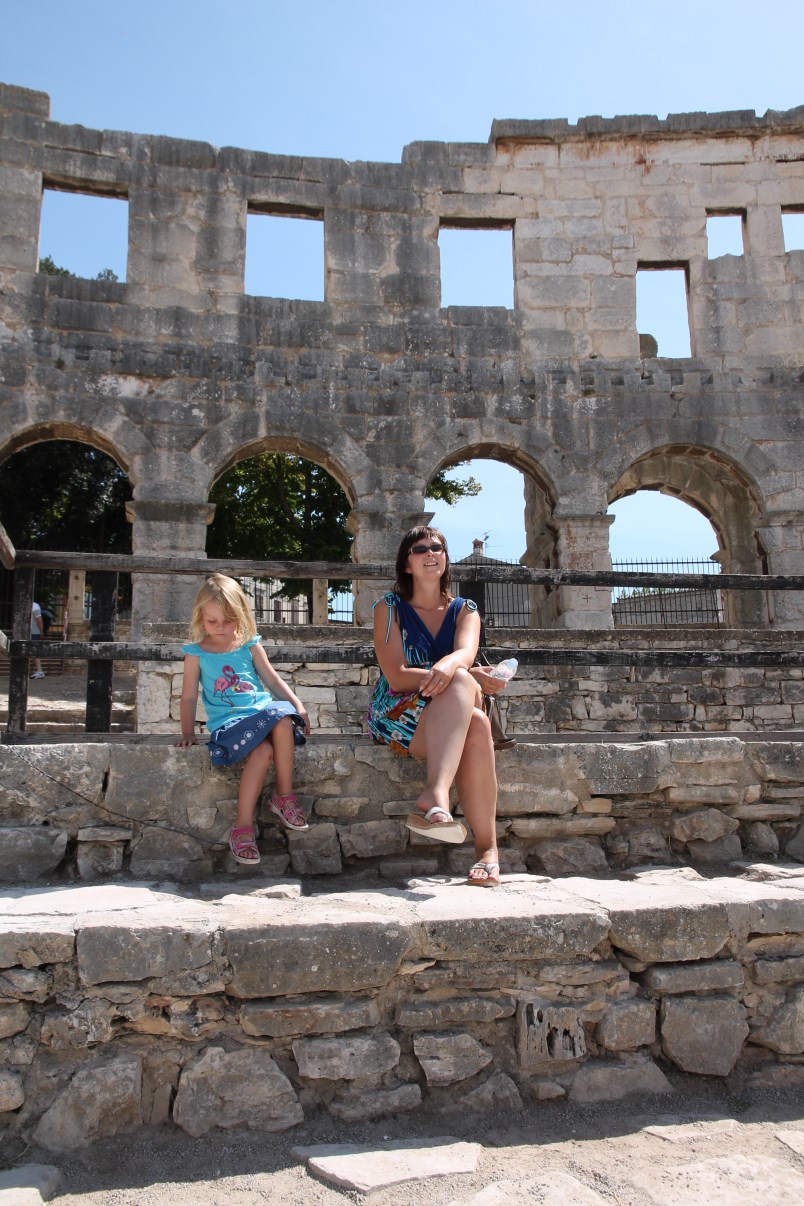



It was also great fun to go underground and see where the gladiators and wild animals would have waited before they entered the arena. This place also has an impressive collection of amphoras and an exhibition about olive oil making.

Most parts of the original city wall and (10) gates were demolished in the 19th century. One of the remaining gates, the so-called twin gates, is a double-arched former entrance to the city, built in the 2nd-3rd century AD. It is located directly southwest of the Pula amphitheatre. Today, passing through it will take you to the Archeological Museum and castle.
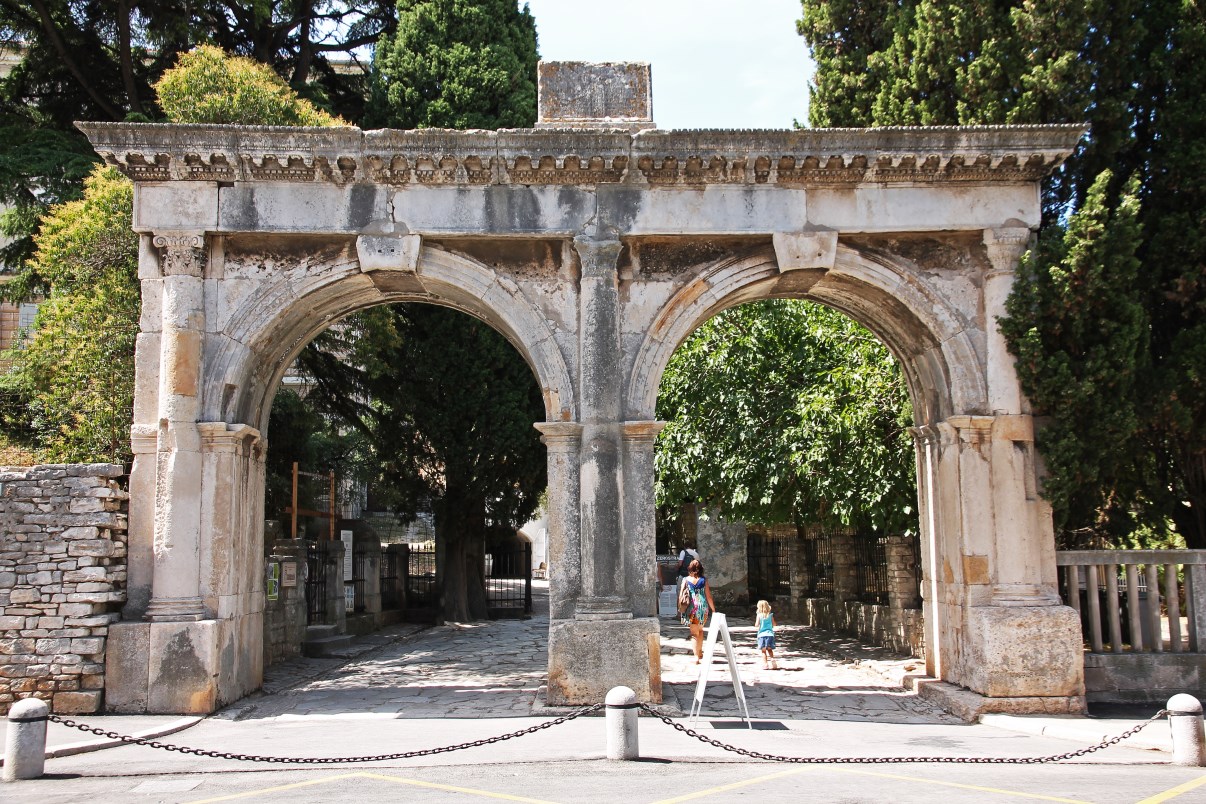
Walking along the Kandlerova Ulica, we passed the cathedral of Pula with its 18th-century, free-standing bell tower, on our right side.
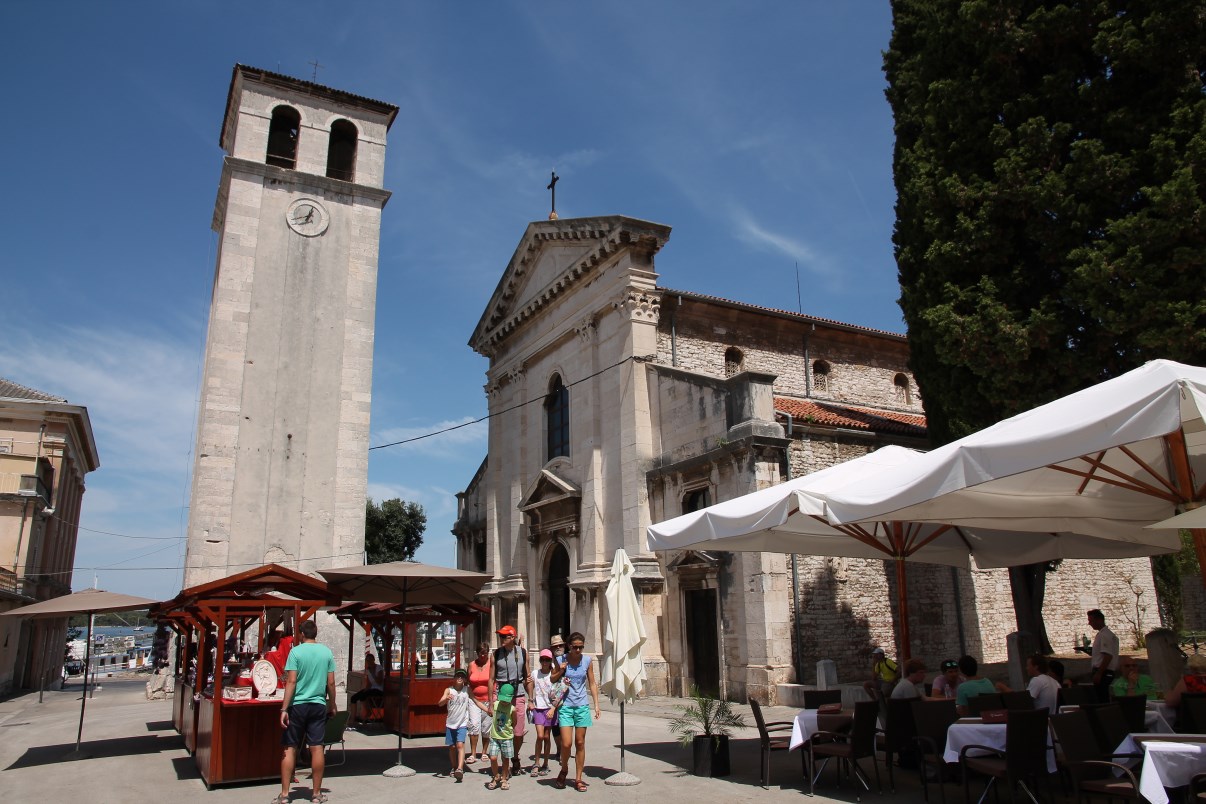
From there it’s only a short walk until you reach the Forum. This is indeed the location of the original Roman Forum, which was dominated by three temples in imperial times: one in honour of Augustus, a main temple in honour of Jupiter, Juno and Minerva, and another small temple for of the goddess Diana. Parts of the latter temple are incorporated into the 13th-century communal palace. The elegant Temple of Augustus is the only one that has survived more or less intact (although it had to be reconstructed after demolition in WWII), but it provides the perfect backdrop for a lunch on one of the terraces. On the other hand, it might be better to avoid the forum for eating, because we had a terrible lunch here at Nonno: expensive, tiny portions and really really bad food! (Tripadvisor teached us afterwards that this was a place to avoid, though)
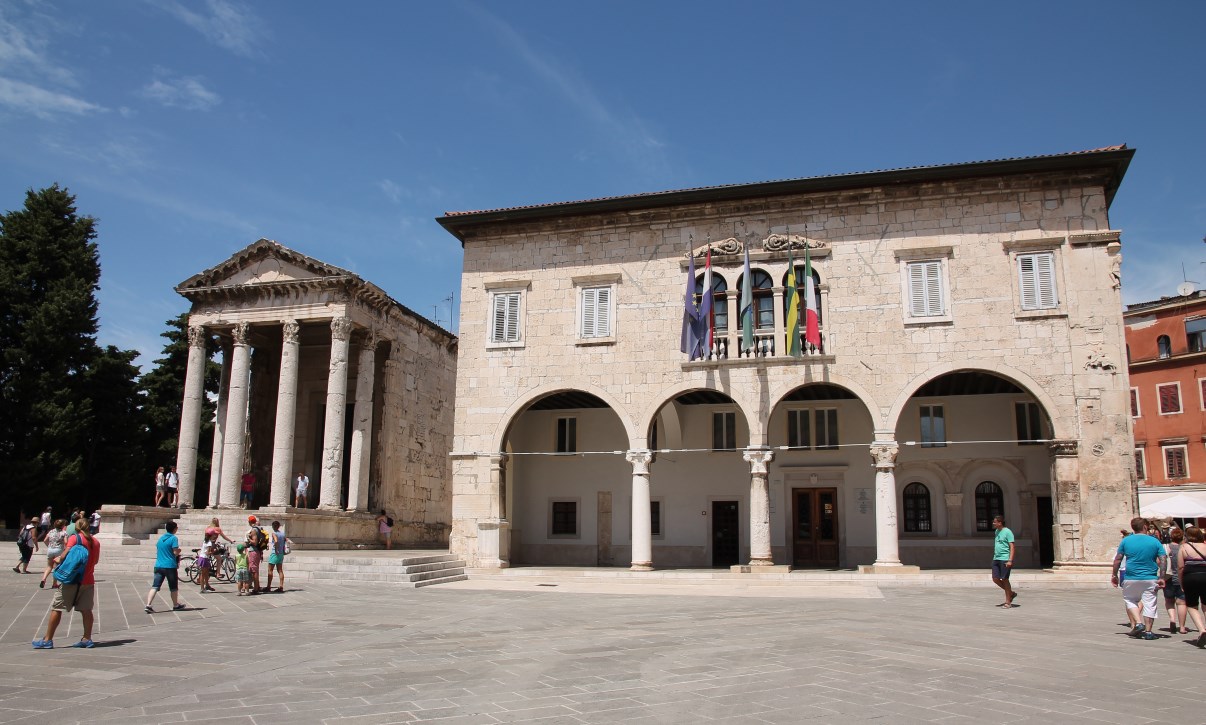

Even if you don’t like old Roman ruins, Pula is a nice place for a stroll through its narrow streets. It doesn’t have the charm of smaller and more cosy Istrian cities such as Rovinj, though.
We left the old city through the Triumphal Arch of the Sergi, erected in the first century BC in honour of some members of the Sergius-family that served in the Batlle of Actium. This arch, in Corinthian Style, was originally built against the Golden city Gate (Porta Aurea). This is why the external (eastern) side is not carved or decorated. Also note the eagle on the underside of the arch. Some remaining parts of the city walls can be found near this arch.
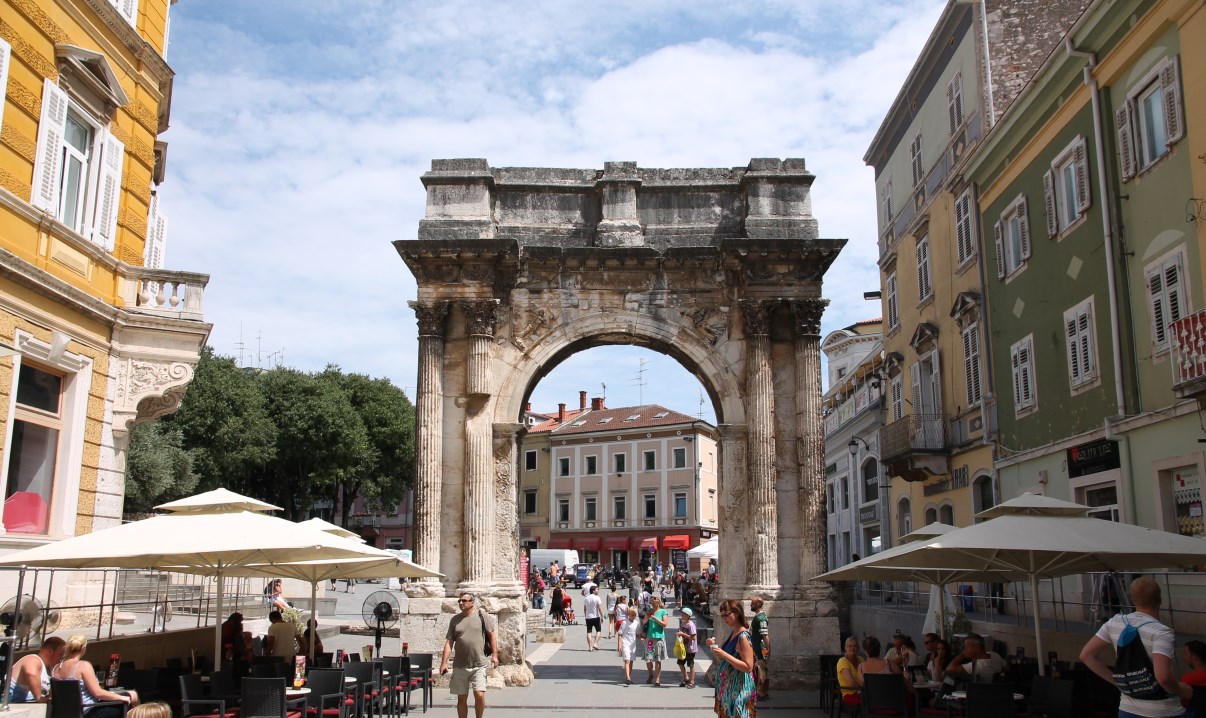
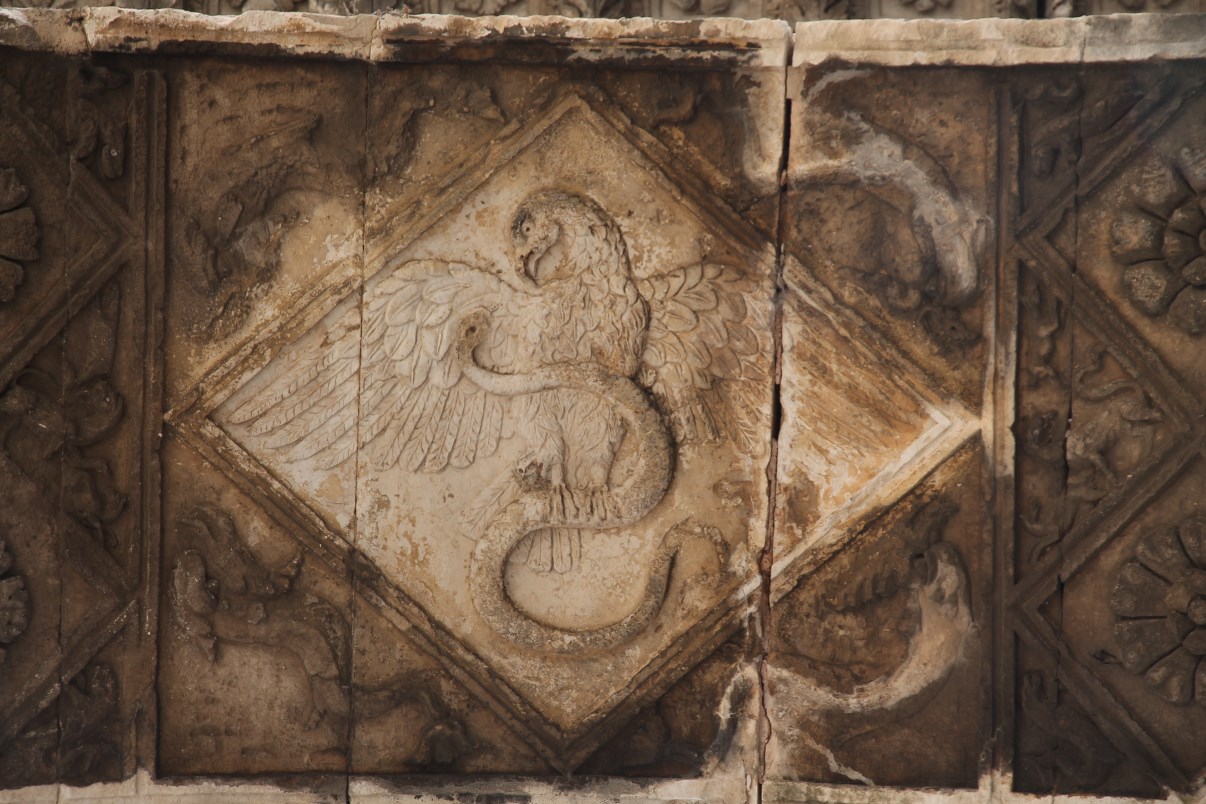

In short, if you’re in Croatian Istria, Pula is definitely worth a visit. Especially the amphitheatre is a must-see. I also really liked the Temple of Augustus on the forum.





Superrrrr, prachtige foto’s. Inderdaad Kroatië is heel mooi, ik ga er ook jaren lang naartoe met mijn ouders. Nogmaals super mooie foto’s! ?
Groetjes
Zehra
Hello, I’m happy to see that you are satisfied with your visit to Pula. Very near to the famous Arena Roman amphitheatre, there’s a “MEMO – Museum of Good Memories” that I highly recommend everyone to visit. Must try foods in Pula are “ćevapi u lepinji” (minced meat sticks with special red salsa in special bread), Istrian prosciutto and “krempita” (cremeschnitte – cream cake dessert).
Pula is a wondeful city to explore ancient history. I’m glad you liked it.